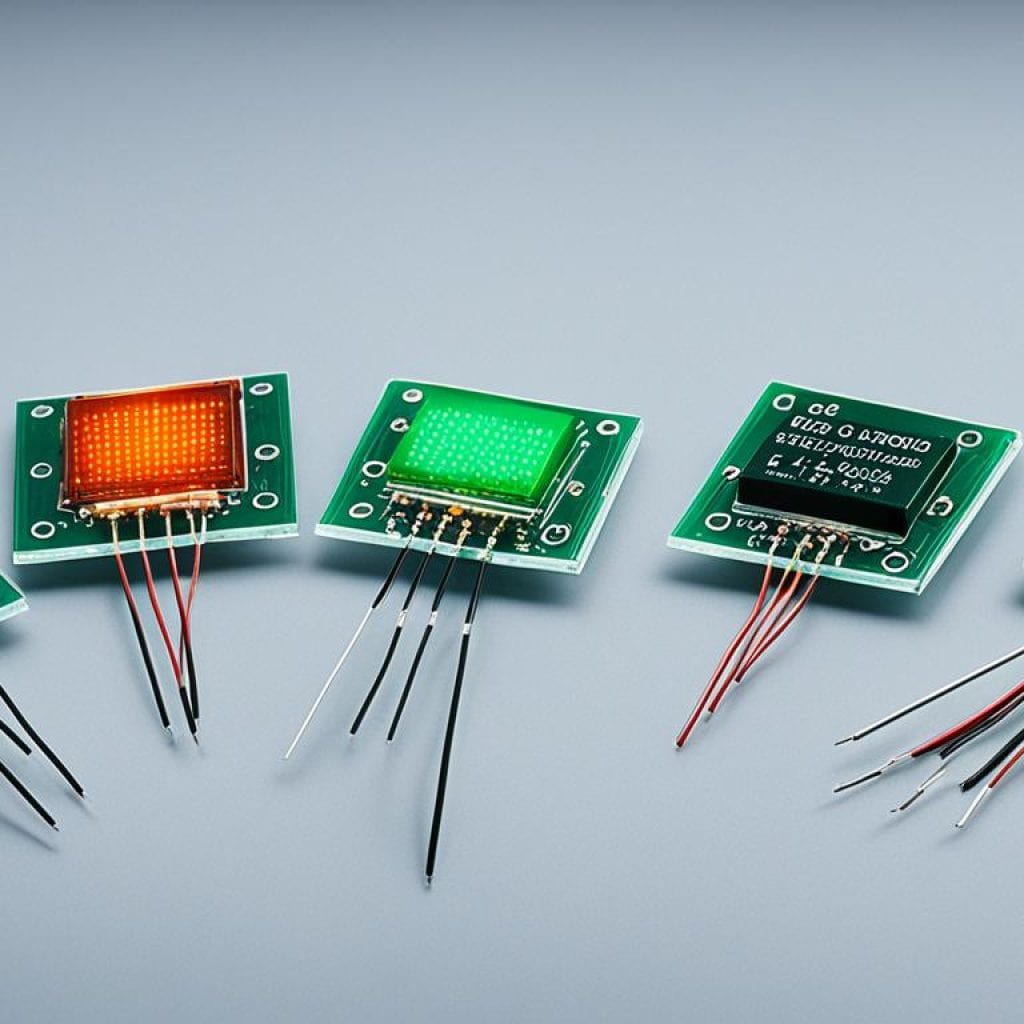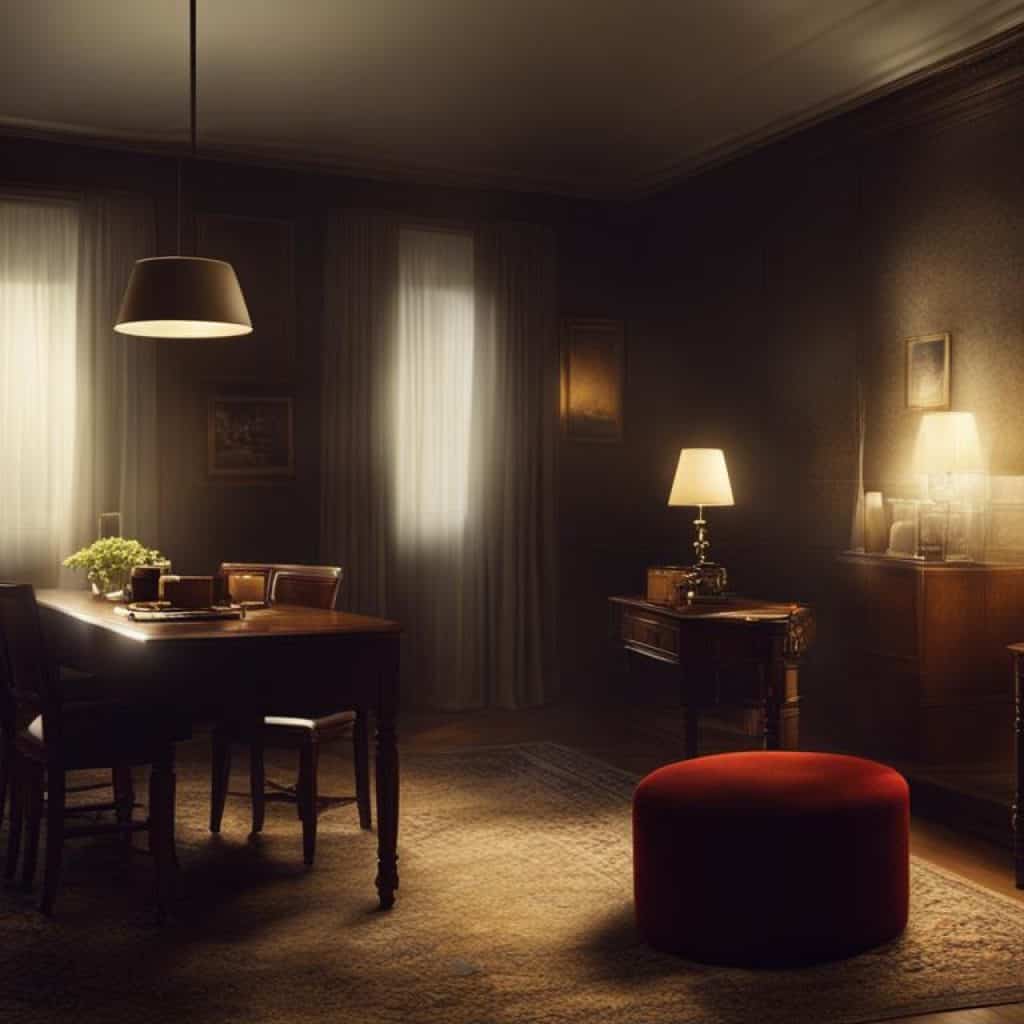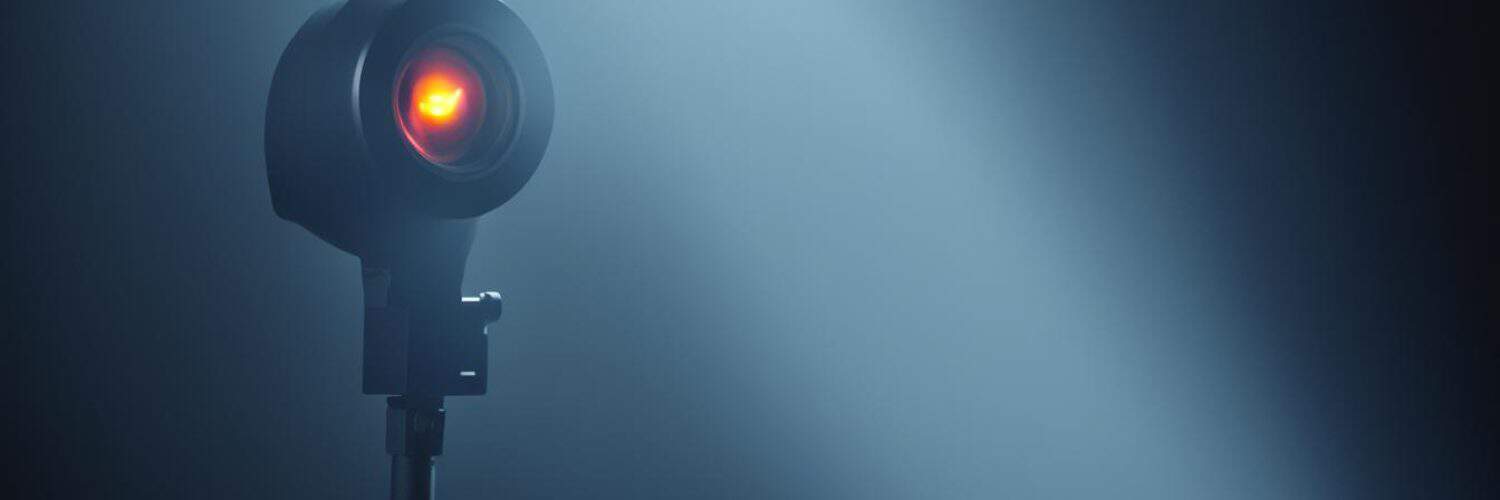Have you ever wondered what an LDR is and what it does? Perhaps you’ve heard the term but aren’t quite sure of its meaning. Well, you’re in the right place! In this article, we will explore the fascinating world of LDRs and uncover their significance in various applications. Get ready to dive deep into the world of light-dependent resistors!
But first, let’s address the burning question: What exactly is an LDR? Is it a mysterious relationship, filled with distance and longing? Not quite! An LDR, or Light Dependent Resistor, is a special type of resistor that changes its resistance based on the intensity of light. It acts as a light sensor, reacting to changes in light levels and allowing us to measure and respond to light intensity.
Now that we have a basic understanding of what an LDR is, let’s explore how it works and its various applications in detail.
Key Takeaways:
- An LDR, or Light Dependent Resistor, is a type of resistor that adjusts its resistance based on the intensity of light.
- LDRs are commonly used as light sensors in automatic street lights, camera light meters, and solar street lamps.
- The resistance of an LDR decreases as the intensity of light increases.
- LDRs work on the principle of photoconductivity, where light energy is absorbed, and electrons become excited, reducing the resistance.
- There are different types of LDRs, including intrinsic and extrinsic photoresistors, made from materials like cadmium sulfide and indium antimonide.
How Do LDRs Work
LDRs, or Light Dependent Resistors, operate on the principle of photoconductivity. When light shines on the photoconductive material of an LDR, the energy from the light is absorbed, exciting the electrons in the material. These excited electrons move from the valence band to the conduction band, increasing the material’s conductivity and reducing the LDR’s resistance. Conversely, in the absence of light, the LDR has its highest resistance.
The relationship between light intensity and LDR resistance is inversely proportional, following a hyperbolic graph. As the light intensity increases, the resistance of the LDR decreases. This enables LDRs to accurately measure and respond to changes in light levels in various applications.
LDRs are constructed using a photoconductive material, typically comprised of semiconductor compounds like cadmium sulfide (CdS) or lead sulfide (PbS). When incorporated into circuits, LDRs provide a simple yet effective means of sensing and controlling light intensity.
“Light is the key that unlocks the potential of LDRs, transforming them into highly sensitive light sensors.”
Understanding how LDRs work is crucial for implementing them in various electronic applications. By leveraging the photoconductivity principle, LDRs offer a practical and cost-effective solution for measuring and responding to light intensity levels.
Types of LDR or Photoresistors
Light Dependent Resistors (LDRs) come in different types, each designed for specific applications. The two main types of LDRs are intrinsic and extrinsic photoresistors.
Intrinsic Photoresistor:
Intrinsic photoresistors are made with pure semiconductors like silicon and germanium. They do not undergo doping, which is the process of intentionally introducing impurities to alter their electrical properties. Instead, intrinsic LDRs rely solely on the energy from incident light to excite electrons and change their resistance. They are highly sensitive to light and can detect even subtle changes in intensity.
Extrinsic Photoresistor:
Extrinsic photoresistors are made with doped semiconductors. These semiconductors have impurities, such as phosphorus, added to their material composition. Extrinsic LDRs are specifically designed for longer wavelengths of light, particularly infrared (IR) light. They have broader light sensitivity and can detect light in the IR spectrum.
LDR Materials:
LDRs can be made using various materials, each offering different characteristics and performance:
| LDR Material | Advantages | Disadvantages |
|---|---|---|
| Cadmium Sulfide (CdS) | High sensitivity to visible light | Not suitable for applications involving high temperatures |
| Lead Sulfide (PbS) | Excellent sensitivity to IR light | Lower sensitivity to visible light |
| Indium Antimonide (InSb) | High sensitivity to IR light | Expensive material |

These different types of LDRs and materials provide flexibility for various light-sensing applications. Whether it’s detecting visible light or capturing infrared radiation, LDRs offer a reliable and effective solution for monitoring and responding to changes in light intensity.
How to Test LDRs
LDRs, or Light Dependent Resistors, can be easily tested using a multimeter. By measuring the resistance of the LDR, you can determine its light sensitivity. Here’s a step-by-step guide on how to test LDRs with a multimeter:
- Set your multimeter to the ohms mode.
- Connect the positive and negative terminals of the multimeter to the two sections of the LDR.
- Expose the LDR to light by shining a glowing torch or any other light source on it.
- Note down the resistance value displayed on the multimeter.
- Repeat the process in a dark environment and record the resistance value.
- Compare the resistance values to assess the light sensitivity of the LDR.
When light falls on the LDR, its resistance decreases, and in the dark, the resistance increases. By testing LDRs in different lighting conditions, you can determine their responsiveness to light intensity.
Example:
In this example, we tested an LDR using a multimeter. Here are the resistance values we obtained:
Light Intensity Resistance Bright Light 150 ohms Dim Light 500 ohms In the Dark 10 kohms
The table above showcases the different resistance values we observed at various light intensities. It is evident that the resistance of the LDR decreases as the light intensity increases, demonstrating its light-sensing capabilities.
By following these simple steps and analyzing the resistance measurements, you can effectively test LDRs and assess their light sensitivity.
Applications of LDRs
LDRs, also known as Light Dependent Resistors, are versatile electronic components that find applications in a variety of industries. Their ability to detect and measure light intensity makes them indispensable in numerous light-sensitive circuits and devices.
LDR Light Sensor
One of the key applications of LDRs is as light sensors. They are extensively used in various systems that require precise light intensity measurements. LDRs can detect changes in light levels and provide corresponding electrical signals, enabling the automation and control of lighting systems. This makes them integral components in applications such as:
– Automatic street lights, where LDRs sense the ambient light and automatically switch on or off the street lights accordingly.
– Photographic light meters, where LDRs determine the appropriate exposure settings for cameras by measuring the available light.
– Solar cells, where LDRs help regulate the charging and discharging of batteries by tracking the solar radiation.
LDR in Security Systems
LDRs play a crucial role in security systems, offering enhanced surveillance and protection. By detecting changes in light levels, LDRs can trigger alarms or activate security measures, making them valuable components in:
– Alarm systems, where LDRs can sense sudden changes in light, such as the opening of doors or windows, and trigger audible or visual alarms.
– Security systems, where LDRs are used to detect unauthorized movements in restricted areas, activating surveillance cameras or alerting security personnel.
– Laser-based security systems, which utilize LDRs to sense any interruption or disruption in laser beams, indicating possible intrusions.
Furthermore, LDRs find applications in various electronic devices for light detection and intensity measurement. They are commonly integrated into camera light meters, clock radios, and dynamic compressors to provide accurate and reliable performance.
| Application | Description |
|---|---|
| Automatic Street Lights | LDRs enable automatic control of street lighting based on ambient light conditions, enhancing energy efficiency and safety. |
| Photographic Light Meters | LDRs assist in determining the correct exposure settings for cameras by measuring the available light. |
| Solar Cells | LDRs regulate the charging and discharging of batteries in solar cells by monitoring the intensity of solar radiation. |
| Alarm Systems | LDRs detect sudden changes in light levels, triggering audible or visual alarms to alert against potential threats. |
| Security Systems | LDRs sense unauthorized movements and activities, activating surveillance cameras or alerting security personnel. |
| Laser-Based Security Systems | LDRs detect interruptions or disruptions in laser beams, indicating possible intrusions or tampering. |
| Camera Light Meters | LDRs assist in accurately measuring and adjusting the light exposure settings in photographic devices. |
| Clock Radios | LDRs are used to adjust the display brightness in clock radios according to the ambient light conditions. |
| Dynamic Compressors | LDRs control the signal gain in dynamic compressors, ensuring optimal audio performance in various applications. |
Difference Between LDR and Photodiode
Photodiodes and LDRs are two light-sensitive devices with distinct characteristics and applications. Understanding the differences between them is essential for choosing the right component for your project.
1. Principle of Operation
Photodiode: This semiconductor device generates electric energy when exposed to light. It operates based on the photovoltaic effect, where absorbed photons create electron-hole pairs, generating a photocurrent.
LDR: Light Dependent Resistors, on the other hand, function as variable resistors. They change their resistance with light intensity. When exposed to light, the resistance of an LDR decreases, and it increases in the absence of light.
2. Applications
Photodiode: Photodiodes are primarily used in applications that require fast response times, such as optical communication systems and optoisolators. These devices are highly sensitive to specific light wavelengths, making them suitable for precise light detection and measurement.
LDR: LDRs find widespread use in automatic security lights, burglar alarms, and other applications that require light sensing and intensity detection. Their broader sensitivity range enables them to respond to a wide spectrum of light, making them versatile in various lighting control systems.
3. Sensitivity
Photodiode: Photodiodes are designed to be highly sensitive, capable of detecting even low levels of light. They can accurately measure light intensity in specific wavelength ranges, making them ideal for precision applications.
LDR: LDRs are generally less sensitive compared to photodiodes, but they offer a broader range of light sensitivity. This makes them reliable for applications where a general understanding of light intensity is sufficient, such as ambient light detection in security systems.
4. Comparison Table
| Aspect | Photodiode | LDR |
|---|---|---|
| Principle of Operation | Photovoltaic effect | Variable resistance |
| Applications | Optical communication, optoisolators | Automatic security lights, burglar alarms |
| Sensitivity | High, specific wavelength range | Lower, broad sensitivity range |
As shown in the table above, photodiodes and LDRs have distinct characteristics and applications. Photodiodes excel in precise light measurements and quick response times, while LDRs are more versatile in general light detection and intensity control systems.
Choosing between an LDR and a photodiode depends on the specific requirements of your project. Consider factors such as response time, sensitivity, and the desired application to make an informed decision.
Limitations of LDRs
LDRs, or Light Dependent Resistors, have proven to be valuable electronic components in various applications. However, it is important to be aware of their limitations to ensure successful implementation.
1. LDR Response Time
LDRs have a response time that can range from a few milliseconds to several seconds. This means that they require some time to fully respond to changes in light intensity.
“The response time of LDRs depends on factors such as the specific model, circuit design, and the intensity of light being measured. It’s important to consider this response time when using LDRs in applications where rapid changes in light levels need to be detected.”
2. LDR Sensitivity
The sensitivity of LDRs varies with the light wavelength. While they can effectively detect visible light, they may have lower sensitivity compared to other light-sensitive devices like photodiodes and phototransistors.
“When selecting an LDR for a specific application, it is necessary to consider the desired light wavelength and ensure that the chosen LDR has the appropriate sensitivity for accurate light detection.”
3. LDR Resistance Variation
LDRs exhibit resistance variations with changes in temperature. This means that the resistance of an LDR may vary when exposed to different temperature environments. To compensate for this variation, additional temperature compensation circuits may need to be implemented.
“To ensure accurate readings and stable performance, it is important to account for resistance variations caused by temperature changes. Temperature compensation circuits can help mitigate the impact of temperature on LDR resistance.”
4. Vulnerability to Moisture
LDRs are not waterproof and can be susceptible to damage when exposed to moisture or water. Care must be taken to protect LDRs from environmental factors that may compromise their functionality.
“When using LDRs in outdoor applications or environments with high humidity, it is crucial to enclose or protect them to prevent water damage. This will help ensure their longevity and reliability.”
Despite these limitations, LDRs remain valuable components for light sensing and detection, offering cost-effective solutions in many applications.

| Limitations | Implications |
|---|---|
| LDR Response Time | Requires time to fully respond to changes in light intensity, affecting real-time detection in certain applications. |
| LDR Sensitivity | Lower sensitivity compared to other light-sensitive devices may limit their accuracy in detecting certain light wavelengths. |
| LDR Resistance Variation | Resistance changes with temperature fluctuations, necessitating additional temperature compensation circuits for stable performance. |
| Vulnerability to Moisture | Exposure to moisture or water can damage LDRs, requiring protective measures in humid or outdoor environments. |
Frequently Asked Questions about LDRs
-
What are some common applications of LDRs?
LDRs find applications in various industries and electronic devices. They are commonly used in:
- Automatic street lights
- Camera light meters
- Solar street lamps
- Alarm systems
- Security systems
- Light-sensitive circuits
-
How is the resistance of an LDR measured?
Measuring the resistance of an LDR requires the use of a multimeter. By connecting the positive and negative terminals of the multimeter to the two sections of the LDR, the resistance can be measured. The resistance values can then be used to determine the light sensitivity of the LDR.
-
Can LDRs be used with digital circuits?
Yes, LDRs can be used with digital circuits. LDRs can be interfaced with microcontrollers and other digital devices to detect and respond to changes in light intensity. By programming the digital circuit, specific actions can be performed based on the LDR readings.
-
Does the resistance of an LDR vary with temperature?
Yes, the resistance of an LDR can vary with temperature. It is important to consider temperature compensation circuits to account for these resistance variations and ensure accurate light intensity measurements.
These are just a few frequently asked questions about LDRs. If you have any more queries, feel free to reach out to us.
LDR Interfacing with evive
Interfacing an LDR with evive allows you to read the analog values from the LDR and perform actions based on the light intensity. By connecting the LDR to the analog pin of evive, you can visualize the LDR values on evive’s screen and program specific actions based on those values using platforms like PictoBlox. This tutorial provides step-by-step instructions on how to interface the LDR with evive and program it to control the backlight of PictoBlox’s stage or control the Pin 13 LED on evive.
Start by gathering the following materials:
- evive board
- LDR (Light Dependent Resistor)
- Jumper wires
- Resistors (if required)
Follow these steps to interface the LDR with evive:
- Connect one terminal of the LDR to the 5V pin of evive.
- Connect the other terminal of the LDR to any analog pin of evive (e.g., A0).
- If necessary, connect a resistor between the analog pin and ground to form a voltage divider circuit.
- Upload the code provided in the tutorial to evive.
- Open the Serial Monitor in evive’s software and observe the analog values read from the LDR.
- Based on the analog values, program specific actions using PictoBlox to control the backlight of PictoBlox’s stage or the Pin 13 LED on evive.
Quote:
“Interfacing an LDR with evive opens up a world of possibilities for light-based projects. With evive’s analog input capability and the flexibility of PictoBlox, you can create interactive systems that respond to changes in light intensity. Get ready to explore the exciting realm of LDR evive interfacing!”
DIY Projects with LDR
Unleash your creativity with DIY projects that incorporate LDRs (Light Dependent Resistors). These projects allow you to create light-sensitive and interactive systems that can enhance your home or showcase your technical skills. LDRs can be easily integrated into custom electronic setups and programmed to perform specific tasks based on light intensity. With platforms like Arduino and Raspberry Pi, the possibilities for DIY projects with LDRs are truly endless.
Automatic Lighting Systems
One popular DIY project with LDRs is creating automatic lighting systems. By combining LDRs with Arduino or Raspberry Pi, you can design a system that automatically turns on lights when the ambient light level decreases and turns them off when it increases. This project is not only practical but also energy-efficient, making it a great addition to any living space.
Shadow-Controlled Robots
Another exciting DIY project involves building shadow-controlled robots. By incorporating LDRs into your robot’s design, you can program it to react to changes in light and shadow. For example, the robot could follow a light source or perform specific actions when it detects shadows. This project combines electronics, coding, and robotics to create a unique and interactive experience.
Smart Home Automation
LDRs can also be used in smart home automation projects. By integrating LDRs with Arduino or Raspberry Pi, you can develop a system that adjusts the lighting, temperature, or other parameters of your home based on the ambient light level. Imagine walking into a room that automatically adapts to your preferred lighting conditions or having your blinds adjust based on the intensity of sunlight. Smart home automation projects with LDRs offer both convenience and energy efficiency.
Incorporating LDRs into your DIY projects opens up a world of possibilities. Whether you’re a beginner or an experienced maker, these projects offer a chance to explore your creativity and technical skills. Let your imagination run wild and start creating your own light-sensitive and interactive systems today!
Conclusion
In conclusion, an LDR, or Light Dependent Resistor, is a versatile electronic component that plays a crucial role in light sensing and detection. By changing its resistance based on light intensity, LDRs are widely used in various applications such as automatic lighting systems, security systems, and light meters.
LDRs work based on the principle of photoconductivity, where the resistance decreases as the intensity of light increases. They come in different types, including intrinsic and extrinsic photoresistors, which are made from different materials and serve different light sensing purposes.
Testing LDRs can be easily done using a multimeter to measure the resistance in different light conditions. However, it’s important to note that LDRs have some limitations, such as response time and sensitivity variations with light wavelength. Nonetheless, these limitations don’t overshadow the immense value LDRs bring to the field of light sensing.
Furthermore, LDRs can be interfaced with platforms like evive, allowing for interactive projects and precise control based on light intensity. Moreover, DIY enthusiasts can explore a multitude of creative possibilities by incorporating LDRs into their projects, leveraging platforms like Arduino and Raspberry Pi.
In summary, LDRs are a remarkable electronic component that empowers engineers, hobbyists, and professionals to harness the power of light in countless innovative ways. Whether it’s automating lighting systems, enhancing security, or creating interactive light-sensitive projects, LDRs offer endless possibilities for creativity and innovation.
FAQ
How do LDRs work?
LDRs work on the principle of photoconductivity. When light falls on the photoconductive material of the LDR, the electrons in the material become excited, increasing the conductivity and decreasing the resistance of the LDR.
What are the types of LDRs or photoresistors?
There are two main types of LDRs: intrinsic and extrinsic photoresistors. Intrinsic photoresistors are made with pure semiconductors like silicon and germanium, while extrinsic photoresistors are made with doped semiconductors and are designed for longer wavelengths of light.
How can LDRs be tested?
LDRs can be tested using a multimeter in the ohms mode. By connecting the positive and negative terminals of the multimeter to the two sections of the LDR, the resistance can be measured. The resistance will decrease with an increase in light intensity.
What are the applications of LDRs?
LDRs have a wide range of applications, including automatic street lights, photographic light meters, solar cells, alarm systems, security systems, and camera light meters.
What is the difference between LDRs and photodiodes?
LDRs are resistors that change their resistance with light intensity, while photodiodes are semiconductor devices that generate electric energy when exposed to light. Photodiodes are used in applications that require quick response times, while LDRs have a broader light sensitivity range.
What are the limitations of LDRs?
LDRs have a response time, lower sensitivity compared to photodiodes, and resistance variations with temperature changes. They are also not waterproof and can be damaged by exposure to moisture or water.
How can LDRs be interfaced with evive?
Interfacing an LDR with evive allows for reading the analog values from the LDR and performing actions based on the light intensity. This can be done by connecting the LDR to the analog pin of evive and programming specific actions using platforms like PictoBlox.
What DIY projects can be done with LDRs?
LDRs can be used in various DIY projects, such as automatic lighting systems, shadow-controlled robots, and smart home automation. They can be integrated into custom electronic setups using platforms like Arduino and Raspberry Pi.


















Add comment